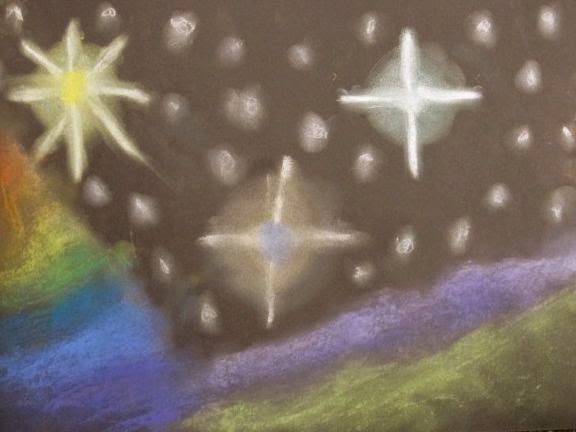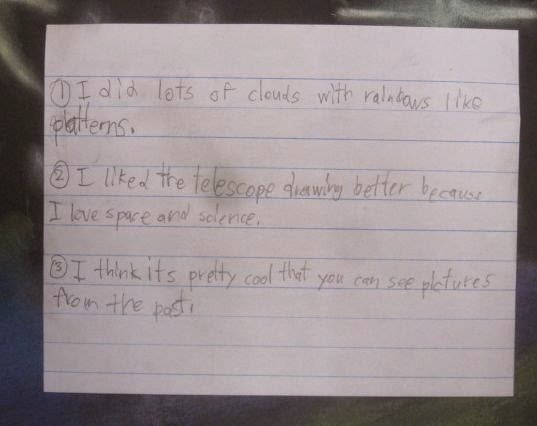We had an interesting PD yesterday and one of the things discussed was that students understanding of the content increases when they know why they are learning about it. What is the purpose of the learning? To that end I wrapped up my intro with the following-
Why practice creating tints and shades?
Well, I tell them, one of the main reasons the video games play look so real is that the programmers and artists who design them use the element of value effectively to create light and shadow in those games. So, my students who are interested in designing games, or becoming an illustrator, they are going to need to nail the use of light and dark in their work. Not, obviously, right away, but their time to practice and evolve starts right here, right now, in elementary school.
The students were to use Mario's work as a resource. I explained that our goal was not to copy his work, but use it as inspiration for a fun way to practice making tints and shades.
The project can break down into a few steps-
1. Draw the surfer. Start with the waist and go from there. Talk about how a surfer uses their arms and legs to balance like the kids do on a skateboard. Then add the board.
2. Draw at least 6 waves and then add a couple curved lines to break up the bigger waves into smaller parts. Emphasize not to copy your example. Tell them to respond to their drawing as they go. IF they have a lot going on in one area, add shapes to another part. If they have a big open space, think about adding a wave to that area to make it more interesting.
3. 6 shapes gives them enough waves to color with a couple colors and tints and shades of each of those colors. Color the waves. With tints, shades, and the colors by themselves. If waves are left over, they can make them white or black or create more tints and shades. We used oil pastels, but color sticks, or construction paper crayons could work too.
4. Color the surfer. We used color sticks so the kids could capture more detail than with the oil pastels.
5. Complete an exit slip that gets the kids reflecting on what they did in the project. Ours had 3 questions.
-How did you create tints in your project?
-How is your project different than Mario's?
-What question would you ask Mario about his skateboards or art in general?
adding a color on top of white softly to make a tint.
making shades.
Reflecting and writing.
I love this question for Mario:)
Check this out!
One of the awesome things about focusing on living artists in my curriculum is that I can reach out to them, share what the kids have done with their work, and get feedback from that artist to share with the kiddos. Just last week, Jason Messinger took the time to answer 5 questions the 2nd grade students had for him.
Well, Mario took it one step further and answered the questions up there^ in this post in a video! He wanted to make it even more real for the kids. Indeed, it will. Thanks Mario:)

























































